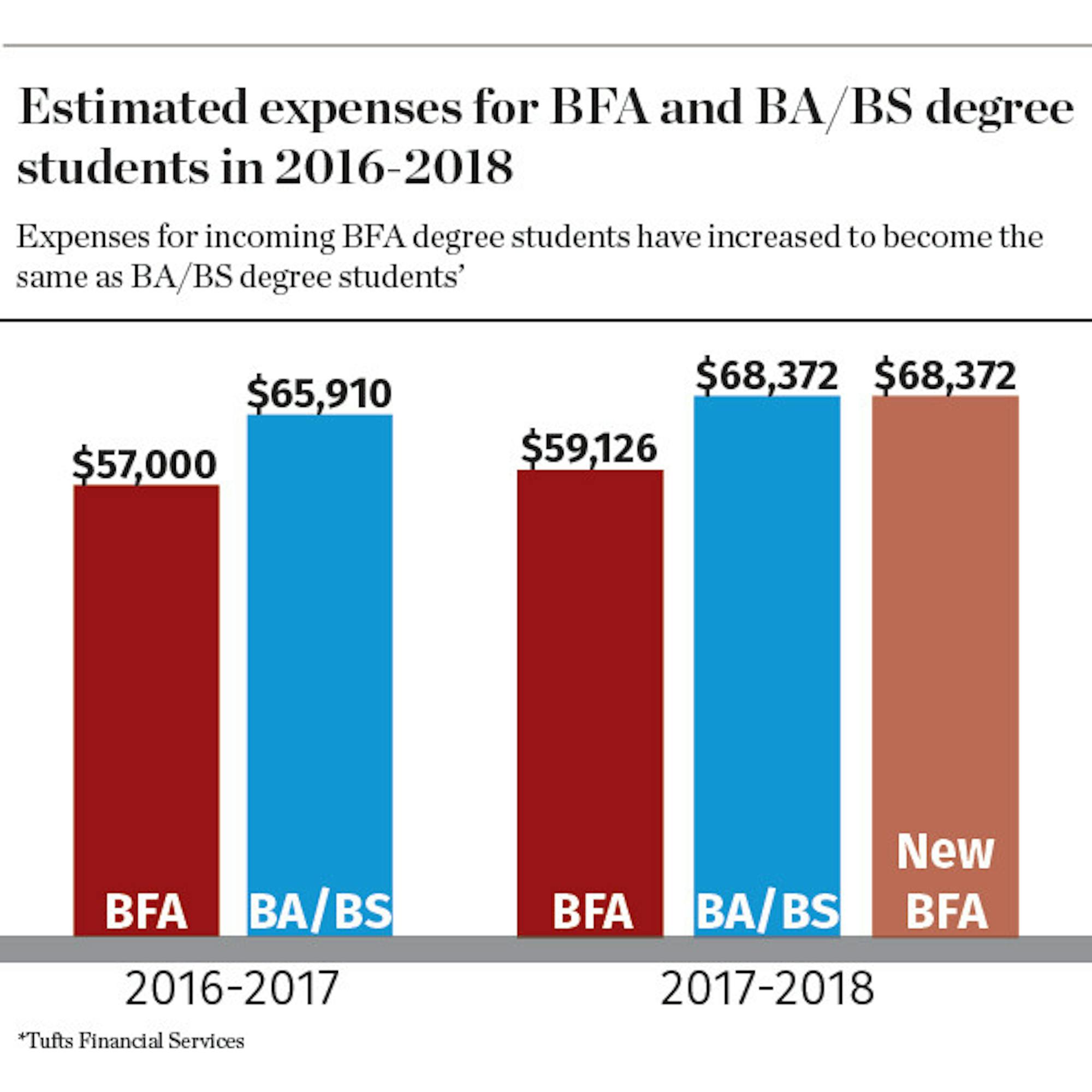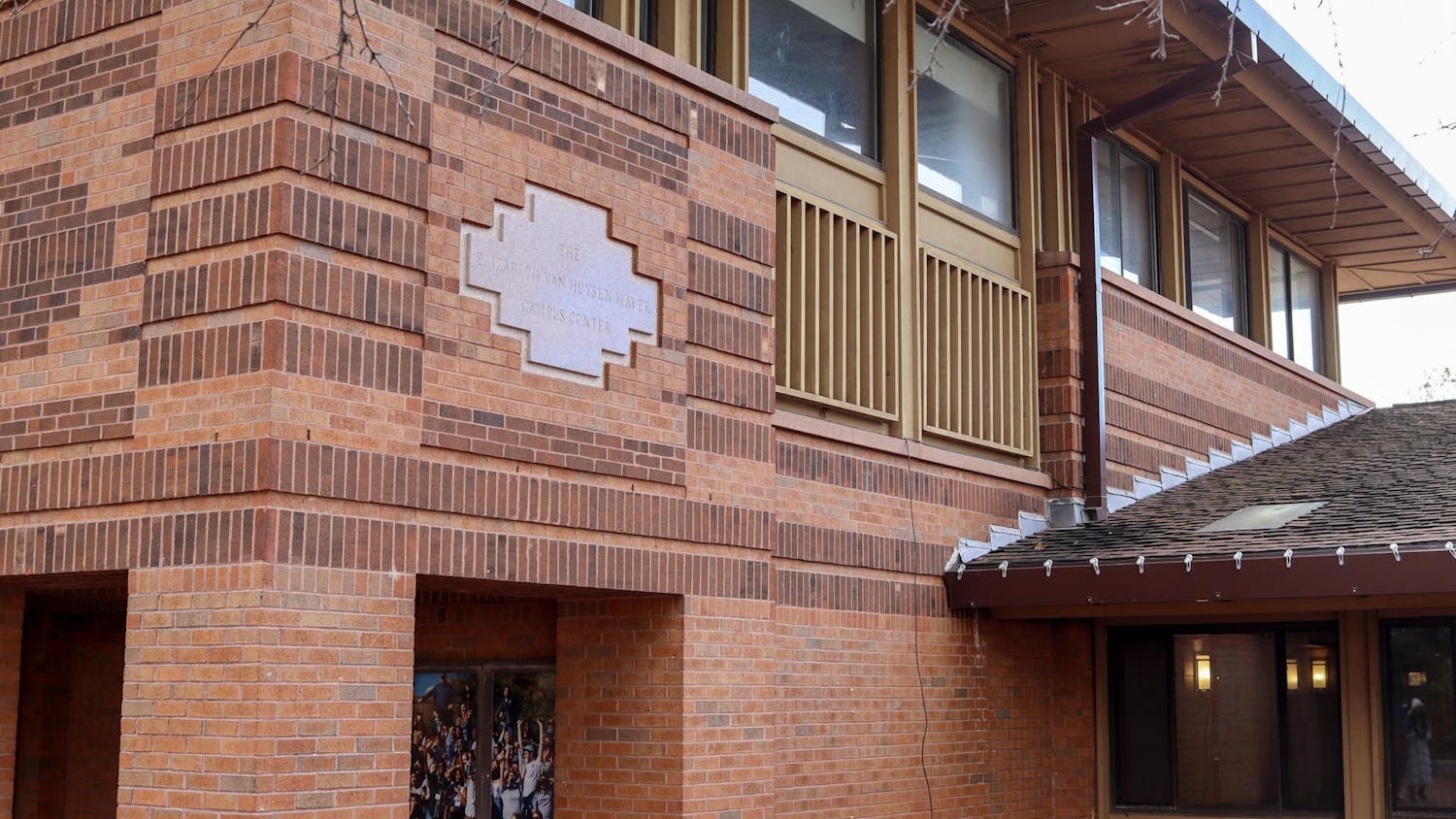This year's first-year class at the School of the Museum of Fine Arts (SMFA) is the first admitted through Tufts' admissions policies, the first to pay full Tufts tuition and the second class to be fully designated as Tufts students after Tufts acquired the SMFA in June 2016. Some Bachelors of Fine Arts (BFA) students, however, feel that their access to resources like dining and health facilities is limited and that their time across the two campuses is disconnected.
Integration of student services
Maia Lai, a sophomore BFA student who was part of the first class after the Tufts-SMFA merger, noted that the transitional phase of the acquisition was confusing for many students. Lai expressed some disappointment with the progress being made, especially in terms of limits to resources like health services on the SMFA campus, located in the Fenway area of Boston.
“We are art students and we are taught how to handle the equipment carefully, but things can happen," Lai said. "There is a metal workshop, there are sparks flying, you can cut yourself, there are ceramics, working in a kiln you could burn yourself.”
According to the Student Life website, SMFA students can either use Tufts Health Service on the Medford/Somerville campus or Harvard Vanguard, a Kenmore Square-area healthcare practice about a 0.7-mile walk away from SMFA.
Lai also said that the availability of mental health services on the Fenway campus needs improvement. She added that students are often referred by the Fenway's counseling services to outside psychiatrists, even when students need a place to discuss general issues. The Student Life website, however, notes that the Fenway campus offers its own free, on-site, confidential mental health care service, apart from Counseling and Mental Health Services on the Medford/Somerville campus.
Sophomore Gabriella Melchiorri explained that although SMFA students are offered resources on the Medford/Somerville campus, the commute from the SMFA campus to access them is time-consuming and inconvenient.
“We are encouraged to go to Tufts for the workout facilities, and even some dining options, because we currently don’t have a cafeteria of our own." Melchiorri said. “As much as I like Tufts and the campus, it is a hike for us to get from point A to point B. [If] you want to go to the gym and be there for an hour, it takes over an hour just to get there sometimes with traffic.”
SMFA students are offered discounts at fitness centers including Northeastern University’s Marino Center and the Huntington Avenue YMCA, in addition to athletic facilities on the Medford campus, according to the Student Life website.
In addition, Lai explained that SMFA students can sign up for meal plans at nearby Emmanuel College, and the Cafe des Arts, an on-campus SMFA cafe, is under renovation. Director of Dining and Business Services Patti Klos said in a March 2017 Daily article that the full-service cafe is planned to be reopened in fall 2018.
Changes to tuition policy
For this academic year, BFA students above the first-year level pay $59,126 per year for tuition, fees, room and board, which reflects a 3.6 percent tuition increase from last year. BFA students who matriculated this year, however, are responsible for $68,372, bringing it in line with Tufts' rate for bachelor of arts and bachelor of science students. Melchiorri also noted the lack of accessibility of resources seems particularly unfair with the increase in tuition for new BFA students.
“There are a lot of things about the school that frustrate all of us, and the tuition hike is just the cherry on top,” Melchiorri said.
SMFA Dean Nancy Bauer said that the Class of 2021 is the first class of SMFA students who came in fully aware of the merge, and noted that this class will follow the same tuition plan as all other Tufts undergraduates. She emphasized that this includes the availability of financial aid that meets students’ full demonstrated need.
“Tufts tuition is higher than the old SMFA rate by a bit, but the higher rate is offset by the fact that the university's financial aid program meets students' full demonstrated need,” Bauer said.
Bauer said that the merger will provide unique financial advantages for SMFA students.
“I think it is a positive thing because it’s typical in independent art schools for people to get merit scholarship money and perhaps some need-based financial aid, but it's rare for art schools to meet 100 percent of the full demonstrated need of all admitted students," Bauer said.
Aside from the lack of access to resources, SMFA expressed other ways they feel disconnected from the larger Tufts community. According to Lai, first-years are encouraged to only take one class at Tufts during their first semester so that they get used to the SMFA campus first. The SMFA First-Year Experience website depicts a sample schedule where English 1 and 2 are the only classes taken on the Medford/Somerville during the first and second semesters, respectively. Lai said she does not see this as an effective way of integrating the two schools, and sees this as a bigger issue than tuition hikes.
“A lot of my friends, including freshmen, are irritated but they want the relationship to get better for future students,” Lai said.
Michelle Gee, a first-year BFA student, felt that her academic schedule restricted her from the Tufts student body. Gee said that, if she were not taking a calculus class at the Medford/Somerville campus, she would not be aware of what was happening at Tufts and would feel even more separate from the Tufts community.
Gee said that the more demanding Tufts application requirements, including the submission of standardized test scores and additional essay questions, for the Class of 2021 did not significantly impact her decision to apply to the program, but that the restrictions on Tufts courses that BFA students can take are affecting her evaluation of the program.
Overall, Lai argued that there is a need for better integration and communication between Tufts and the SMFA.
“There just needs to be better communication between the two [schools] to be the community that Tufts says they are," Lai said. "Academics and art go hand in hand."
Gee also suggested that the schools communicate more directly with students about resources and changes to the program.
“I think SMFA can be a little more vocal with the resources we can use," Gee said. "They should tell us what resources we have."
Despite the lingering problems with the Tufts-SMFA merger, Melchiorri sees the transition overall as a beneficial step.
“Tufts taking over, I believe, is a positive thing for the school ... Tufts is a great institution, and before them the school was in shambles," Melchiorri said. "They’re trying to fix all of the issues. It’s taken a long time, and it’s a huge undertaking."
SMFA students cite concerns about lack of resources, cohesion between communities post merger






